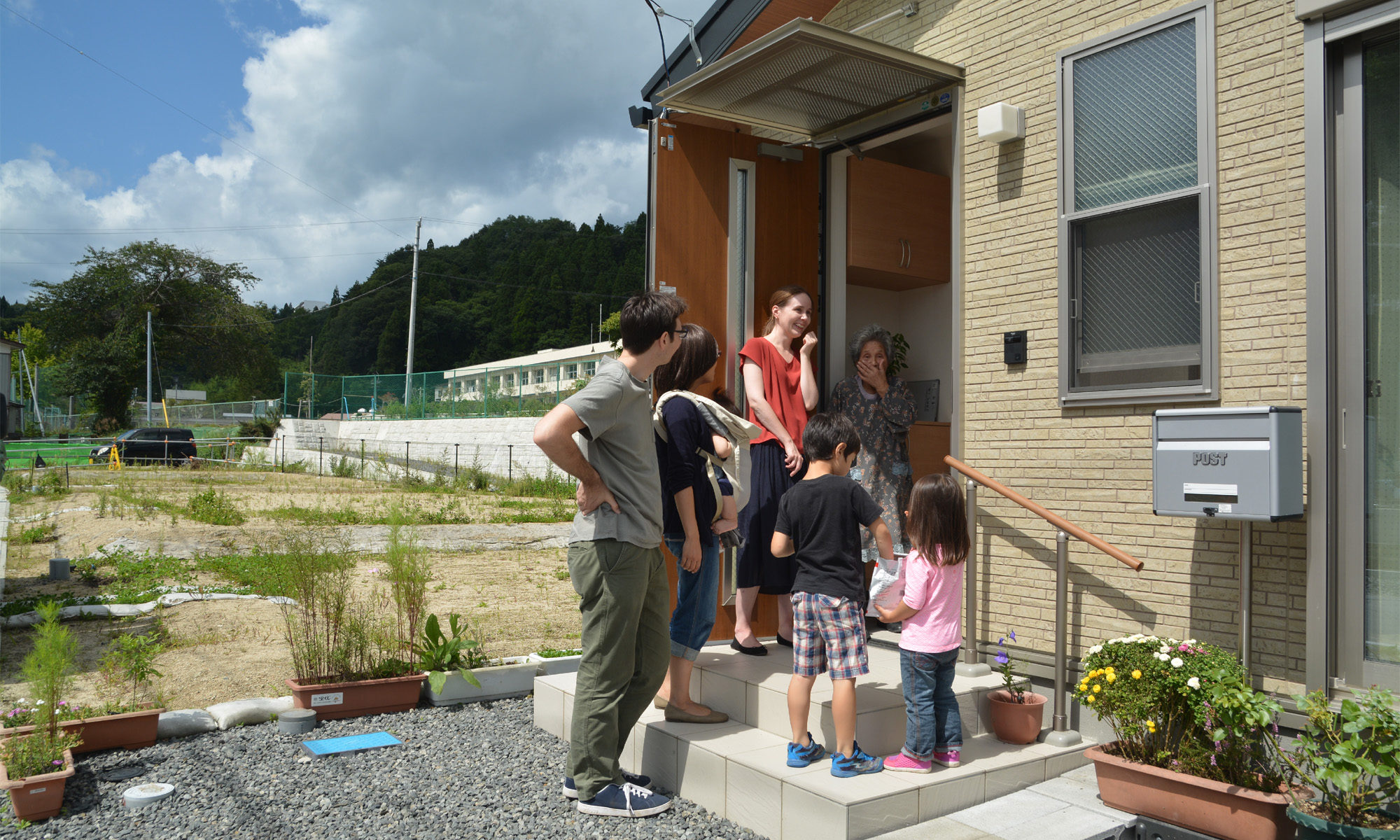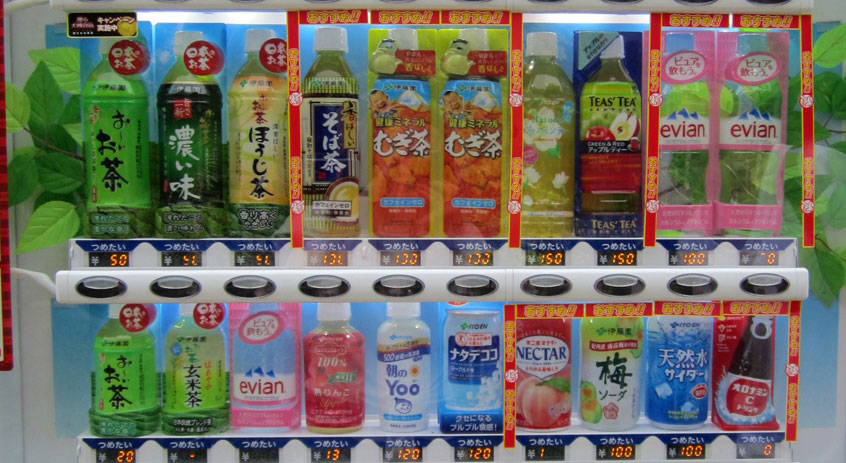So what is Shinto?
Japan’s two dominant religions, Buddhism and Shinto, have coexisted, and intermingled in Japan for nearly 2,000 years, but Shinto is Japan’s indigenous religion tracing it’s roots back to before the time of Christ. It is a polytheistic belief system that honors millions of gods, which are worshiped in shrines, some of which are elaborate buildings on sprawling grounds, others as small as a shack tucked in the middle of a neighborhood.
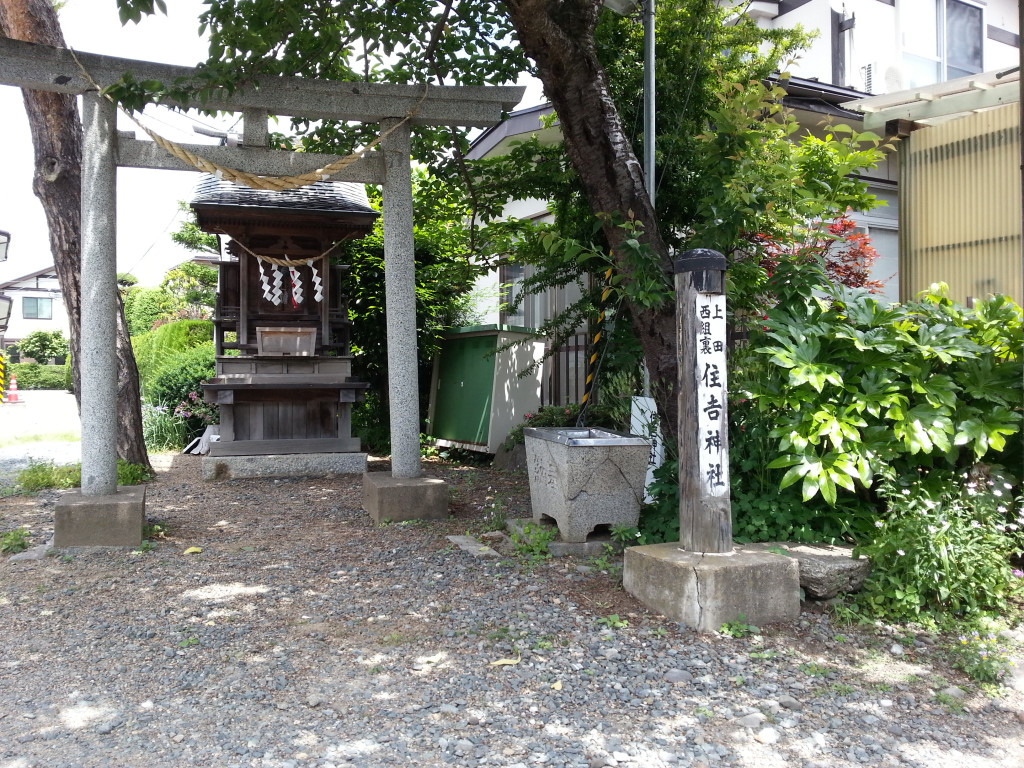
It’s extremely difficult to understand coming from a Christian worldview. Virtually everything that we as Christians hold as foundational — forgiveness of sins, relationship with God, eternal life, holy living, studying the scriptures, all of this is almost wholly absent in Shinto. There is no moral code to study and its holy books are largely a collection of folktales about the various gods that are revered. Very few people here would be able to actually give a working definition of what Shinto followers believe, because belief itself is not important. What is far more important is that you participate in the rituals, holidays and rites which connect you with nature, the community, the nation, and the gods.
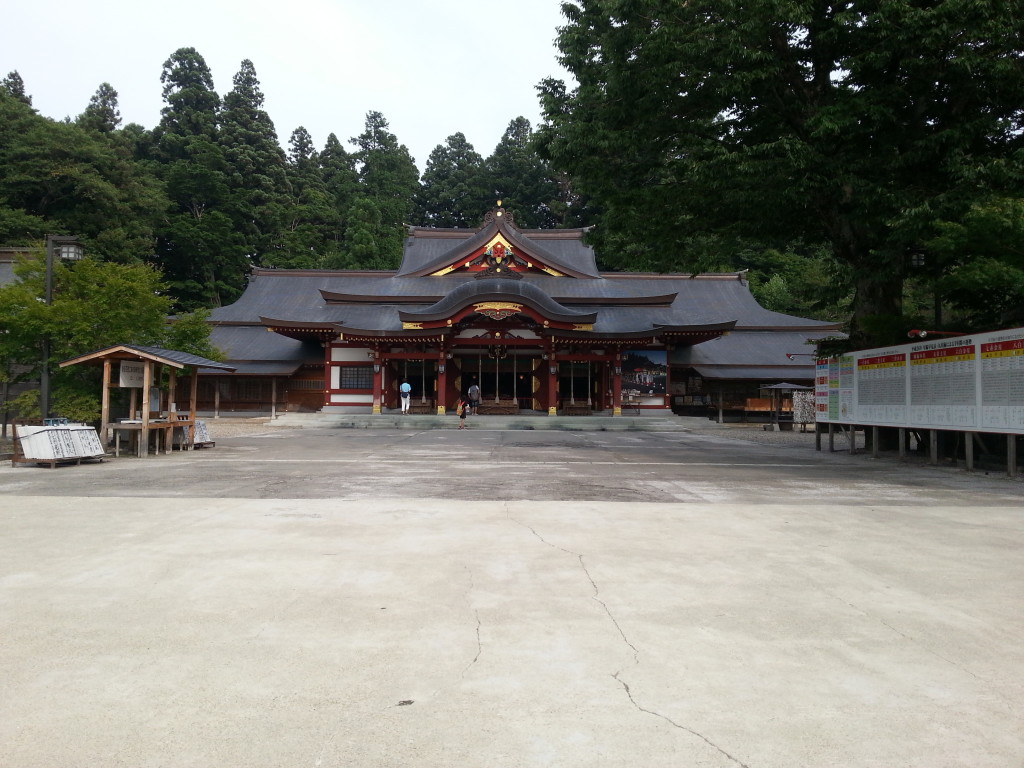
The outward result is that virtually the entire population of Japan participates in Shinto rituals, but to them it’s as natural as celebrating Christmas or Thanksgiving. Most of the time don’t think of it as a religious experience, it’s just tradition. Shrines are everywhere, and each shrine revers it’s own god. Some gods are good at helping you find a girl friend. Others can help you pass a school exam. If you need your back healed, then you have to find the right god who can help and pay a visit to his shrine. But each local community also has it’s own shrine, and it’s own local festivals. The shrines and the events surrounding them become a center of community life, and the residents feel a responsibility to their own shrine, and the god worshiped there.
There is also a national component, as a key teaching in Shinto is that the emperors of Japan are descended from the gods. Shinto thus fosters a national loyalty to Japan’s emperor, and a connection to the nation as a whole. Local gods are revered, but there is a hierarchy, and larger national shrines have greater prominence. This nationalism, which was exploited in the lead up to World War II, and nearly shattered in the aftermath of Japan’s defeat and the emperor’s admission that he was not divine, remains influential to this day.
Shrines themselves always seek to have a strong connection with nature. They are often found in difficult to reach, rugged and beautiful places. When they are in a town, they can usually be spotted first by the clump of trees that often surround them. It can be a little jarring walking from a busy city street into a quiet seemingly untamed plot of land, which is exactly the intended effect.
Unlike Christianity and most other religions, Shinto places very little on emphasis on doctrines or dogmas. There is almost no component of teaching, preaching. It does not really seek to explain what happens after death, but instead is concerned chiefly with the present life of it’s practitioners. Shinto is not characterized so much by what you believe, but by performing and participating in rituals and festivities that have been handed down for thousands of years to honor various gods. By continuing these rituals one is in continuity with Japan’s past.
However it is almost taken for granted that all who practice Shinto are also practitioners of another religion, which in Japan overwhelmingly means Buddhism, but from a Shinto perspective there’s no problem being Shinto and Muslim, or Hindu, or Christian. This obviously poses a serious challenge for Christians seeking to witness to Japanese, as in calling Japanese to repent and turn only to worshiping the One True God, to many this means a break with their communities, families, and even their identity as Japanese.
However as painful as such a loss may be many Japanese have indeed found that the joy of knowing God, and the community found with Him and His church makes it well worthwhile. Pray that the Holy Spirit will reveal this to the other 99% of Japanese who remain in darkness.
If you’d like to learn more about Buddhism in Japan, you can read this post: So what is Buddhism all about?
8 Great Japanese Sodas
One thing I really appreciate about Japan is the incredible selection of beverages they have. With a convenience store (or two) on every corner, and a vending machine (or five) every hundred feet, just walking around town you’ll face an overwhelming number of choices on a hot summer day. Or a cold winter one for that matter, vending machines and convenience stores both dispense hot canned drinks in the winter. I’m limiting this list to sodas, but tea, coffee and energy drinks have an equally staggering variety available.
1. Kirin Mets Grapefruit
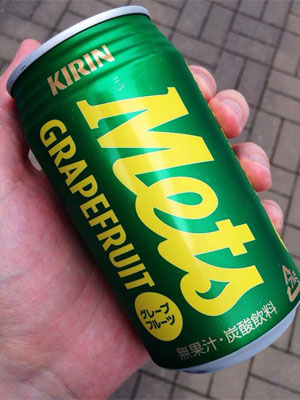 One of my favorites here for hot summer days. It taste’s a lot like a Squirt, but less sweet and a stronger, but very refreshing, grapefruit flavor.
One of my favorites here for hot summer days. It taste’s a lot like a Squirt, but less sweet and a stronger, but very refreshing, grapefruit flavor.
2. Mitsuya Cider
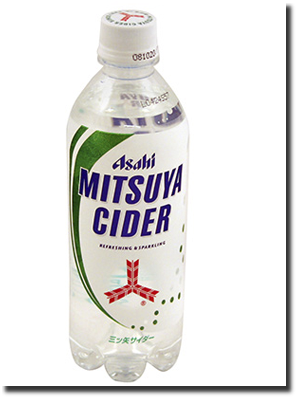 I guess this would be the Japanese answer to Sprite. It’s clear, but not a citrus flavor. I don’t really know what to compare it to, tastes a little like a ginger ale, but less sweet, with a sharper bite and a distinctly different, slightly herbal flavor. I was a little taken off guard the first time I tried it, and it took some getting used to.
I guess this would be the Japanese answer to Sprite. It’s clear, but not a citrus flavor. I don’t really know what to compare it to, tastes a little like a ginger ale, but less sweet, with a sharper bite and a distinctly different, slightly herbal flavor. I was a little taken off guard the first time I tried it, and it took some getting used to.
3. Melon Soda
 OK, so there’s gotta be at least a dozen brands that sell some form of melon soda here. There are both standard melon and melon cream. I imagine the cream versions get their inspiration from the popular melon floats sold as dessert at many restaurants. Generally these are very sweet, very green, with a subtle honey dew melon flavor (though I did find a cantaloupe version once that was quite good) and I have a hard time passing one up anytime its available.
OK, so there’s gotta be at least a dozen brands that sell some form of melon soda here. There are both standard melon and melon cream. I imagine the cream versions get their inspiration from the popular melon floats sold as dessert at many restaurants. Generally these are very sweet, very green, with a subtle honey dew melon flavor (though I did find a cantaloupe version once that was quite good) and I have a hard time passing one up anytime its available.
4. Pepsi Refresh Shot
 I prefer Coke over Pepsi. But I kept seeing this and had to give it a try. It’s about the size of a Red Bull, and supposedly has something like twice the caffeine of a normal Pepsi. It tasted like a Pepsi. Probably won’t be getting many of them though as Japan has better energy drinks available if I really need a boost (not to mention a couple hundred variety’s of excellent canned coffee).
I prefer Coke over Pepsi. But I kept seeing this and had to give it a try. It’s about the size of a Red Bull, and supposedly has something like twice the caffeine of a normal Pepsi. It tasted like a Pepsi. Probably won’t be getting many of them though as Japan has better energy drinks available if I really need a boost (not to mention a couple hundred variety’s of excellent canned coffee).
5. Plum Soda
Plum’s here are big in popularity, small in size. They make a sour plum wine out of them, as well as a refreshing summer drink, sort of a rough Japanese equivalent of lemonade. This is the soda version of those drinks, and it’s delicious. Has a really nice sour bite to it, along with an easily recognizable plum sweetness.
6. Oranamin C
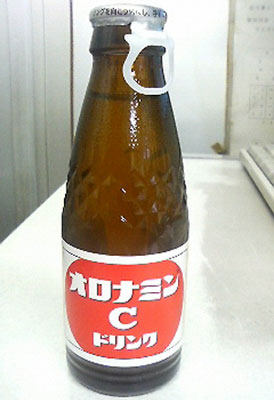 Vitamin infused soft drinks are popular here. I’m not sure exactly why– no one seems to be fooled into thinking that they are actually healthy, but maybe the combination of sugar and vitamins just puts an energetic bounce to your step when you need it. Whatever the reasons, this little guy here is nonetheless one of my favorite sodas in Japan. It tastes a little like a cream soda, but with a slightly bitter, vitaminy after taste, which somehow pulls together the whole experience nicely. It’s very refreshing, and gives you a good dose of Vitamin C, a few of the Bs, some Royal Jelly, and all the sugar you would expect from a normal soda.
Vitamin infused soft drinks are popular here. I’m not sure exactly why– no one seems to be fooled into thinking that they are actually healthy, but maybe the combination of sugar and vitamins just puts an energetic bounce to your step when you need it. Whatever the reasons, this little guy here is nonetheless one of my favorite sodas in Japan. It tastes a little like a cream soda, but with a slightly bitter, vitaminy after taste, which somehow pulls together the whole experience nicely. It’s very refreshing, and gives you a good dose of Vitamin C, a few of the Bs, some Royal Jelly, and all the sugar you would expect from a normal soda.
7. Yogurt Soda
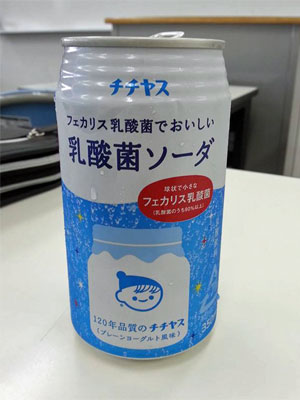 It’s a soda, but with yogurt mixed in for flavoring. It’s carbonated, not any thicker in texture than a normal soda, and has a very creamy flavor. At first it taste like a cream soda (only more so) but then finishes with a slightly sour, yogurty after taste. It’s actually really good.
It’s a soda, but with yogurt mixed in for flavoring. It’s carbonated, not any thicker in texture than a normal soda, and has a very creamy flavor. At first it taste like a cream soda (only more so) but then finishes with a slightly sour, yogurty after taste. It’s actually really good.
8. A billion different Fanta Flavors
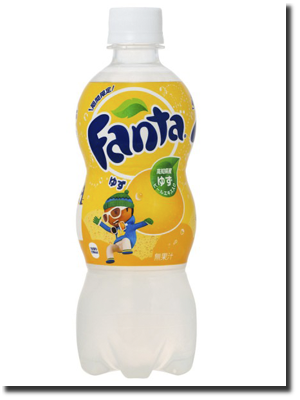 Japan has more Fanta flavors available than anywhere else in the word. Naturally you’ve got your standard Orange and Grape Fanta pretty much everywhere. And of course there has to be a melon Fanta, because everyone who makes soft drinks here has to put out a melon one. But then it seems like throughout the year there’s always something new. I tried this Yuzu one last Summer. I’ve also had Lychee, White Peach and Nashi (Japanese Pear). I’m always on the look for one I haven’t tried yet.
Japan has more Fanta flavors available than anywhere else in the word. Naturally you’ve got your standard Orange and Grape Fanta pretty much everywhere. And of course there has to be a melon Fanta, because everyone who makes soft drinks here has to put out a melon one. But then it seems like throughout the year there’s always something new. I tried this Yuzu one last Summer. I’ve also had Lychee, White Peach and Nashi (Japanese Pear). I’m always on the look for one I haven’t tried yet.
Christmas in Japan
In recent years there seems to be an annual battle in the US over what Christmas is all about. Some seem to want to remove all references to Christ, or to make the season a generic holiday that caters to people of all religious backgrounds, while we Christians often loudly protest and strive to keep Christ as the focal point. I mention this not to weigh in on what I think is the appropriate response American Christians ought to have in this battle, but simply to set in contrast to the Japanese view of Christmas. Because in Japan, despite the fact that Christmas has become a wildly popular holiday in recent years, virtually no one knows why they celebrate it.
As near as I can tell, Christmas was introduced and made popular in Japan, not by Christians (as of now there are not enough Christians in Japan to popularize the celebration of Christ’s birth), but by retailers. Department stores in Japan saw a huge opportunity to increase sales by capitalizing on the popularity of American culture and importing the Christmas holiday (and shopping season). And as you would expect, it’s all Santa Claus, snow men and Christmas Trees, without even a hint of Christ; in fact few even knows that Christmas is actually the celebration of Christ’s birth.
On the one hand it’s sort of sad that when a country like Japan looks at the way we Americans celebrate Christmas they only see materialism and a marketing opportunity. But on the other hand, God lets nothing go to waste. While there are millions of Japanese who are getting ready to celebrate Christmas by shopping and looking for a romantic partner to spend the night with, there are also a few Churches, Christians and missionaries who cherish this time of year to joyously celebrate the coming of their savior, and look to share this joy with the millions of lost people surrounding them. Be praying for the individuals in Japan who will hear the gospel for the very first time this Christmas. Be praying for the churches to have successful outreaches. Be praying that the Holy Spirit will move in people’s hearts to respond to Christ’s calling this Christmas and that they will never celebrate it the same again. Finally, be praying that God will send more missionaries to Japan to work along side the small indigenous churches in Japan to share the hope of salvation through Christ Jesus in the coming years.
So what is Buddhism all about?
Since I’m going to be living in Japan and starting (Christian) churches there I’m trying to get a better understanding of the people and culture. I recently read a book called “Beyond Buddhism” by J. Isamu Yamamoto. Having never really taken the time to study exactly what Buddhism is about, it was very enlightening (heh) to read up on it.
The Buddha’s life is surrounded by myth and legend, making it somewhat difficult to piece together an accurate biography. The earliest written accounts were written around 300 years after his death. It’s generally accepted that Sidhartha Gautamma (The Buddha) was born in the sixth century BC in India. For all you Sunday School students out there, this was roughly around the time of the Babylonian captivity. Siddhartha was born a prince, into a life of wealth and privilege.
Legend has it that it was foretold that if Siddhartha remained in his fathers house he would grow up to be a great ruler, but if he ventured out into the world he would instead become the Buddha, a remover of ignorance from the world. Desiring that his son follow in his footsteps, he ordered that Siddhartha never be permitted to see any suffering or evil, and prevented him from leaving the palace grounds. Despite this Siddhartha managed to sneak into the city and witness the suffering of the common people. He decided to leave his life of wealth behind and search for truth.
After many years of meditation, wandering and leading a life of asceticism, Siddhartha one day sat under a fig tree to meditate. There he was tempted by Mara, an evil spirit, to pursue worldly things. After resisting Mara’s temptation, Siddhartha discovered the Four Holy Truths, and attained enlightenment. From then on he was the Buddha. The Four Holy Truths are:
- All life is grievous, self is a temporal creation cursed with suffering until deliverance is achieved.
- Suffering is caused by false desires of the senses have been deceived into clinging to the impermanent world.
- Deliverance from suffering is achieved when ones desires are suppressed, abandoned or rejected.
- The Noble Eightfold Path: right understanding, right aspirations, right speach, right conduct, right livihood, right effort, right concentration and right mindfulness.
Buddhism is based upon three central concepts: Samsara, Nirvanna and Karma.
Samsara is the belief in a a perpetual cycle of reincarnation. Buddhism teaches that all life is suffering, and thus being forced to continually live life over and over again is the worst fate imaginable, because it is nothing but an endless cycle of suffering.
Nirvana is the end of the cycle. It is to cease to exist and be aware, to no longer be an individual but to be one with the universe. It is the only escape from suffering, and it is what all Buddhists hope to attain eventually.
Karma is the belief that ones choices in life whether to do good or bad, will be rewarded or punished in future lives. Thus if you do good in your current life in your next life your situation will be better. If anything bad happens to you in this life it is punishment for something you did in a previous life.
Some Buddhist sects teach that the only way to reach Nirvana is to live the life of a Buddhist monk, which most Buddhists are unwilling to do. However if Buddhist layperson gives financially to the monasteries, and lives a moral life in accordance with the Buddhist ethic, in their next life they may be born as a person who is willing to enter into the monastery and be free of their worldly desires, and one day reach Nirvana.
Buddhism is founded upon a very bleak outlook on life. However I believe it’s understanding of this life is not far from the truth. The Buddha understood that this world is a very broken place, and he saw no hope of it ever getting better, to him the only way to escape suffering was to rid yourself of all desires and eventually to cease to exist all together. Through the Bible we understand that this world is indeed a bleak and hopeless place, broken by the wickedness of man, and condemned to suffer for all eternity. However it also tells of a marvelous loving God who went through incredible lengths to rescue those who repent of their sins and believe in His Son. Buddhism offers an escape of suffering through the cessation of all desires. Christ offers not merely an escape from suffering, but from the deserved wrath of God, and ultimately the fulfillment of all desires through an eternal relationship with our creator. In Christ we have hope.
